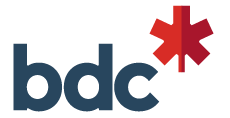 Did you know that the BDC (Business Development Bank of Canada) website features explanations and calculators for some of the most commonly used financial ratios? Financial ratios are a way to evaluate the performance of your business and identify potential problems. Each ratio informs you about factors such as the earning power, solvency, efficiency and debt load of your business. Here’s a brief description of the common financial ratios you can find on their website:
Did you know that the BDC (Business Development Bank of Canada) website features explanations and calculators for some of the most commonly used financial ratios? Financial ratios are a way to evaluate the performance of your business and identify potential problems. Each ratio informs you about factors such as the earning power, solvency, efficiency and debt load of your business. Here’s a brief description of the common financial ratios you can find on their website:
Leverage ratios
Leverage ratios provide an indication of your company’s long‑term solvency and to what extent you are using long-term debt to support your business.
- Debt-to-asset ratio: Shows the percentage of a company’s assets financed by creditors.
- Debt-to-equity ratio: Measures how much debt a business is carrying as compared to the amount invested by its owners.
Liquidity ratios
Liquidity ratios measure the amount of liquidity (cash and easily converted assets) that you have to cover your debts and provide a broad overview of your financial health.
- Quick ratio (also called cash ratio or acid test ratio): Indicates a company’s ability to meet immediate creditor demands, using its most liquid assets (cash or assets that are easily converted into cash), also called quick assets.
- Current ratio (also called working capital ratio): Indicates whether a business has sufficient cash flow to meet its short‑term obligations, take advantage of opportunities and attract favourable credit terms.
Profitability ratios
Profitability ratios are used not only to evaluate the financial viability of your business, but also to compare your business to others in your industry.
- Net profit margin (also called return on sales): Measures the percentage of sales revenue retained by the company after operating expenses, interest and taxes have been paid.
- Return on investment (also called return on total assets): Measures how much profit is generated compared to how much a company has invested to generate those profits.
- Return on equity (also known as return on shareholders’ equity): Indicates the amount of after-tax profit generated for each dollar of equity.
Financial calculator tools
- Business loan calculator: The BDC’s free business loan calculator will help you to calculate your monthly payments and the interest cost of your loan.
Benchmarking tools
Set your business on the right path by identifying the best practices in your industry and then comparing them to your own.
- Average collection period ratio: The average collection period ratio measures the average number of days clients take to pay their bills, indicating the effectiveness of the business’s credit and collection policies.
- Average day payables ratio: The average days payable ratio measures the average number of days it takes for a company to pay its suppliers.
- Inventory turnover ratio: The inventory turnover ratio measures the number of times inventory has been turned over (sold and replaced) during the year.
We think the BDC is a great resource for Canadian entrepreneurs. Be sure to check out these tools and many other tools and articles on the website and in their blog.
